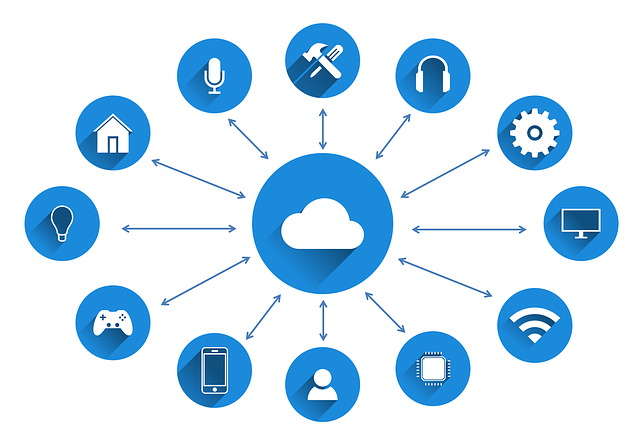
Edge computing powers many advanced innovations in the world, such as Augmented Reality (AR), the Internet of Things (IoT), automated vehicles, and remote surgeries. These technologies require essential capabilities to process and analyze vast quantities of data in real-time, to produce actionable insights. Leveraging 'Edge Computing' can drive powerful data transformations for businesses and enhance their decision-making capabilities.
Analysts predict that edge computing in the Asia Pacific (APAC) will reach US$5.8 billion by 2024, representing a compound annual growth rate of 21 percent over five years. By then, APAC will become the second-largest edge computing market after North America. Over time, the need for strategic infrastructure to support an expanding connected devices ecosystem is growing, and along with it, digital transformation initiatives within the APAC region are accelerating rapidly.
As part of the smart cities initiative, the Indian government aims to promote cities offering a clean and sustainable environment, futuristic infrastructure, and a decent quality of life through the careful application of technology and innovation. To achieve this mission and contribute towards it, companies in the private and public sectors will have to overcome digitization bottlenecks and rely on data-driven strategies to improve operations. Time-to-market will need to be minimized by processing highly time-sensitive data on the device itself or near the source of data, which makes edge computing an essential element for success in India's digitization efforts.
With the upcoming advent of the 5G network, which is ten times faster than 4G, in the telecom sector, the possibilities of far-away sensors to give real-time updates from connected devices are at our doorstep. This will propel the growth of edge computing in India and enhance its distributed computing capacities.
The implementation of edge computing in businesses will undoubtedly broaden the potential to support more sophisticated applications, especially those needed to overcome bandwidth limitations and latency. However, it is important that IT leaders frame clear objectives of business benefits from edge computing and undertake a thorough analysis based on the practical application of this technology. It is important that they are not influenced by the hype surrounding edge computing, and rather, their decision is based on the practical application of this technology and how it can help achieve the objectives of their business.
Need for faster, more efficient data transfer
In recent times, latency is an emerging concern as large volumes of information moves through data centers, typically hosted in the cloud. With Edge architectures, computing and storage systems reside as close as possible to the components, devices, applications, and staff producing and using the data. This proximity nullifies processing delay by minimizing the distance that data must travel, making data processing faster and more reliable. Data no longer have to be sent from the edge of the network to a central processing system and then back to the edge. By eliminating the distance between data sources and devices, edge computing brings technologies close to wherever they need to run.
Empowered with distributed data processing capabilities of edge computing and reduced latency, networks can operate with greater efficiency, and time-critical applications can react to data faster. Further, with edge computing, data transfer is swifter and less expensive. By sending smaller file sizes and decreasing the need for larger server resources, organizations can be more cost-efficient and scalable.
Is Edge computing right for your enterprise?
The first step that business and tech leaders must take before deciding whether to integrate edge computing into their overall strategy is to identify their existing data set types. Answers to questions such as "How critical is this data to the business?", "Which data requires real-time updates?" and "How much space does the data take up?" need to be defined.
Cloud computing offers vast resources and centralized servers stored in data centers, while edge computing brings key processes to the edge of the network for faster and optimized asset performance. Organizations must understand how this interdependence can align with the computing requirements of their business by reflecting on their need for connectivity, data migration, and bandwidth requirements, as well as their latency threshold.
Deploying edge computing also demands an assessment of the business' data storage requirement. The level and location of the data storage must be adequately assessed, especially if the data asset needs to be regularly checked for analysis. Business and IT leaders must also consider whether processing data closer to the point where it is generated would offer beneficial functionality for the business and the customers and enhance their experience as a whole.
With a growing number of cyber-attacks, security is another primary consideration when rolling edge computing plans for the business. While a well-designed edge computing solution is as secure as any other system, particular attention must be paid to the increase in exploitable attack vectors associated with a proliferation of Edge devices. Most security issues specific to edge computing relate to poorly implemented and maintained codes on Edge devices.
Making a significant impact
As data volumes multiply, Indian enterprises are thinking deeper about how their data can perform optimally with reduced costs. The importance of a comprehensive data strategy continues to grow with the IoT revolution forging ahead and the steady rise in the online purchasing of devices, fuelling an explosion in data processing and storage requirements.
Businesses are looking for solutions that answer their data processing needs, and edge computing is poised to make a significant impact on how organizations collect, store, synthesize and analyze their data beyond the confines of a closed data center and enterprise network.
- The author is MD, Asia Pacific, Rackspace Technology

 In
In
Add new comment